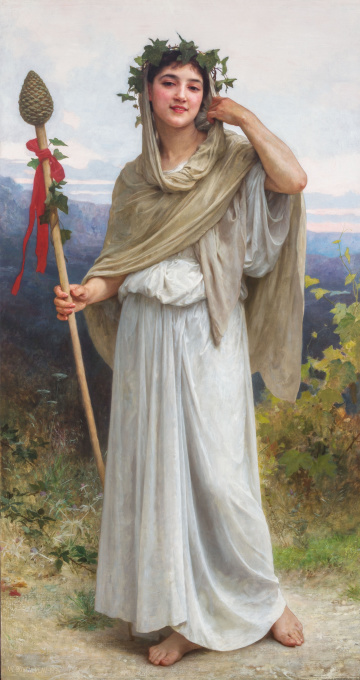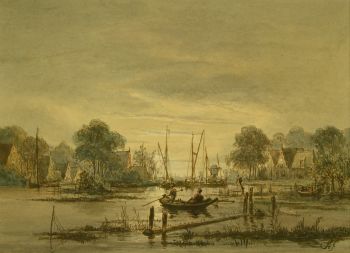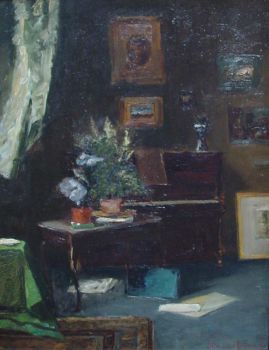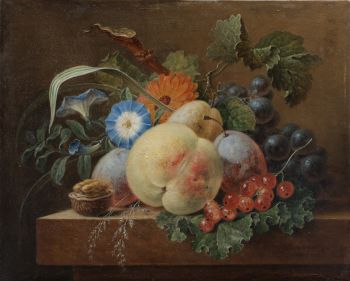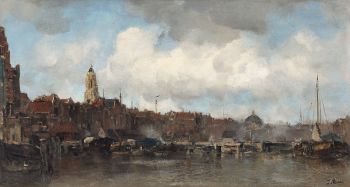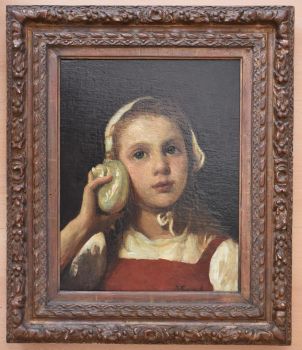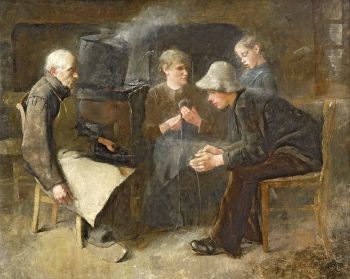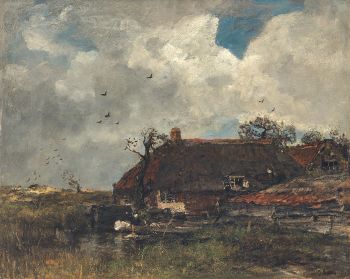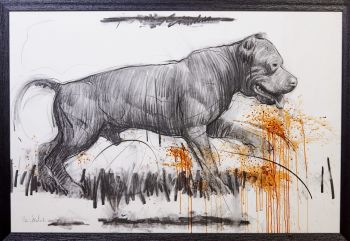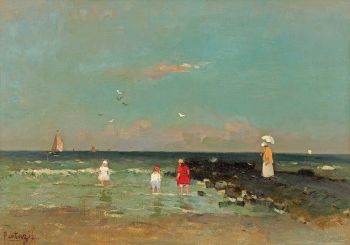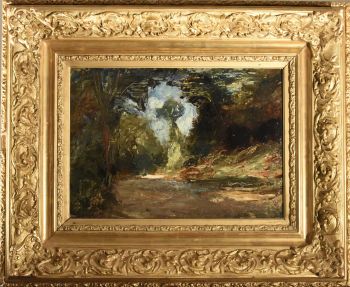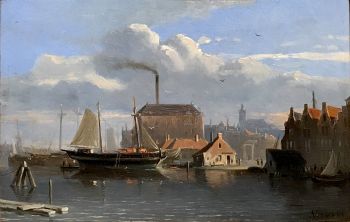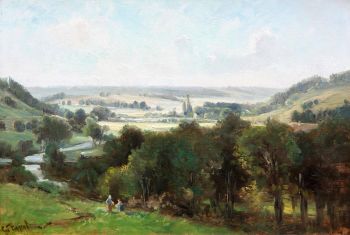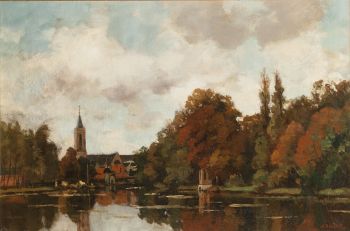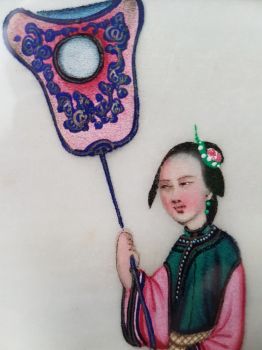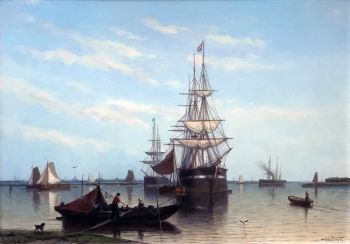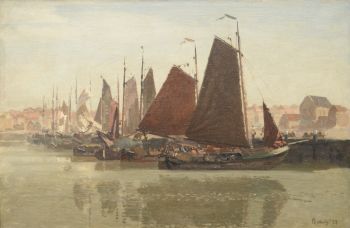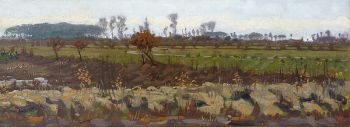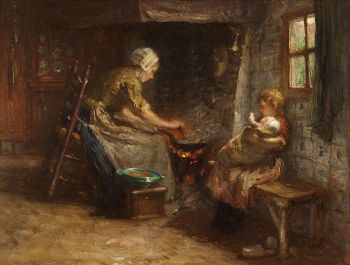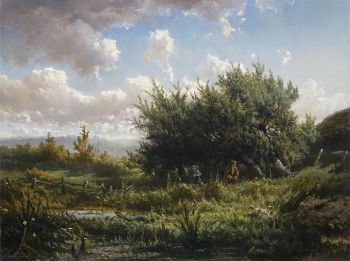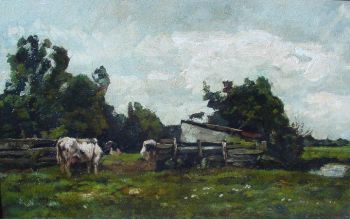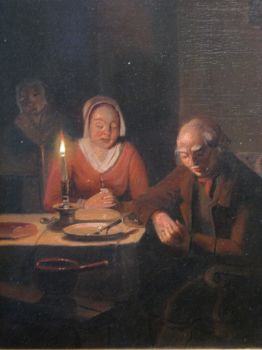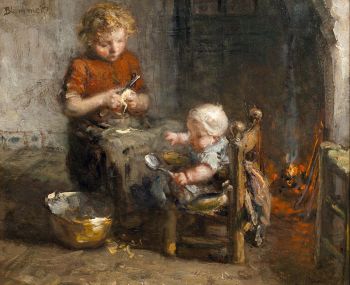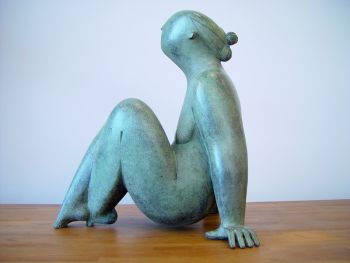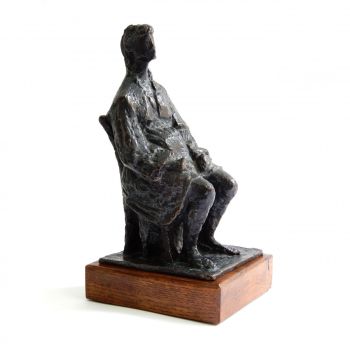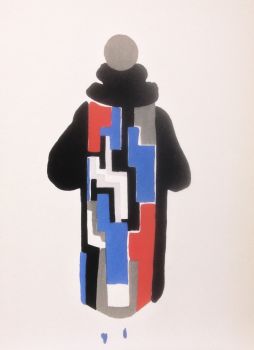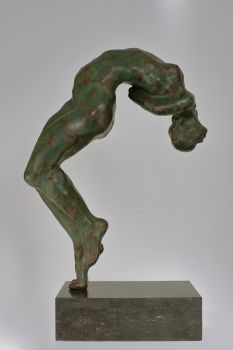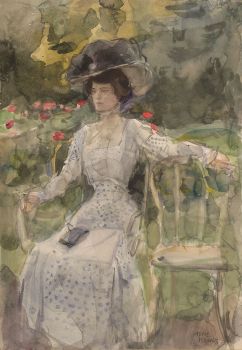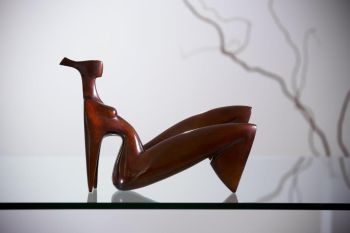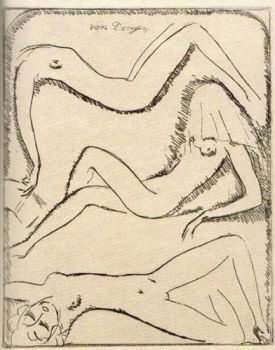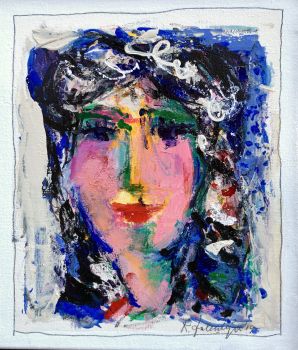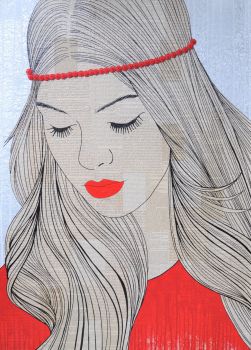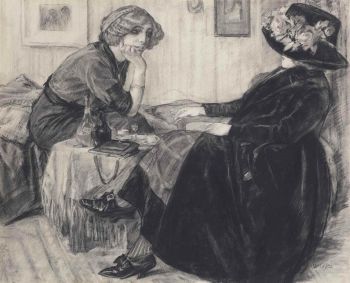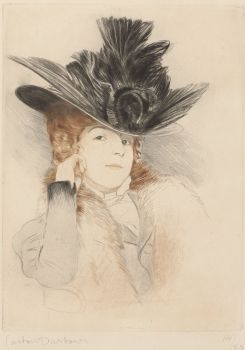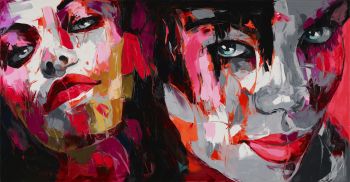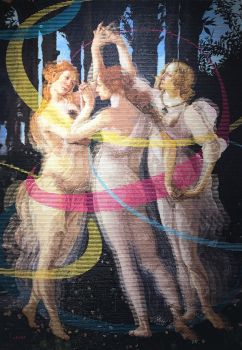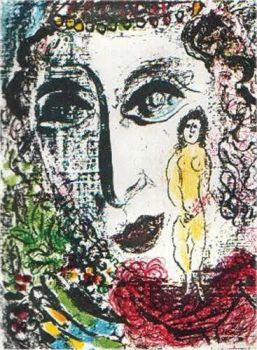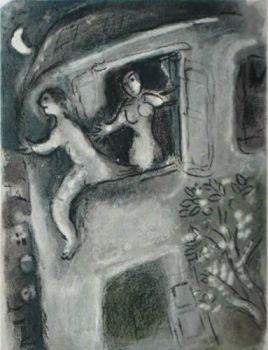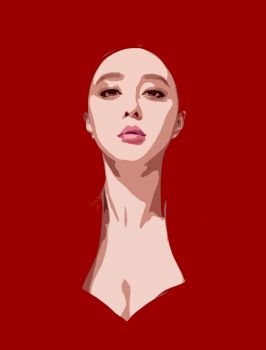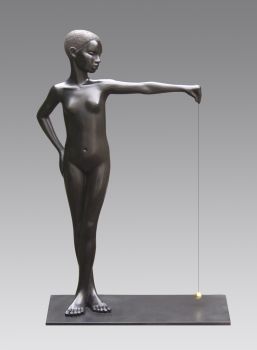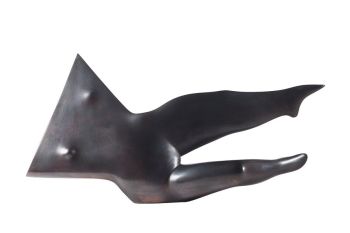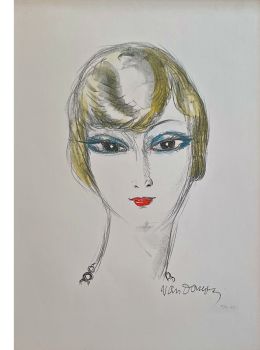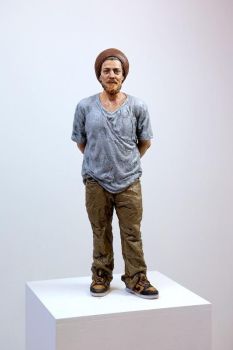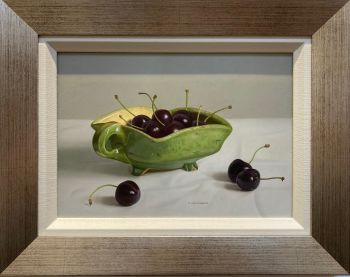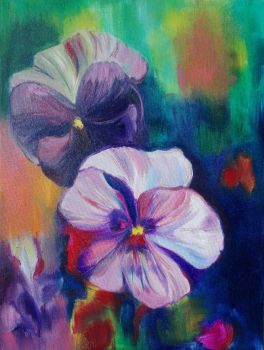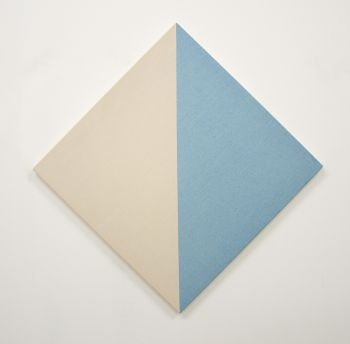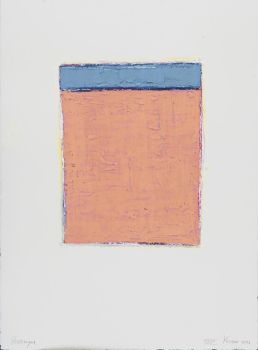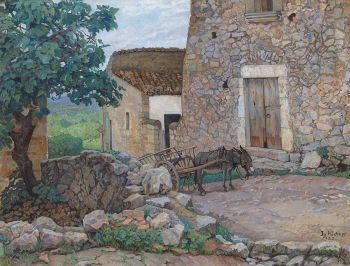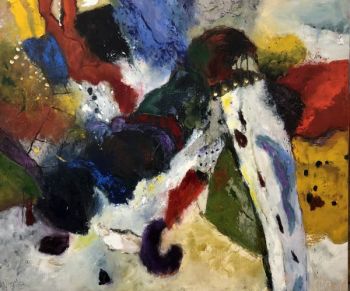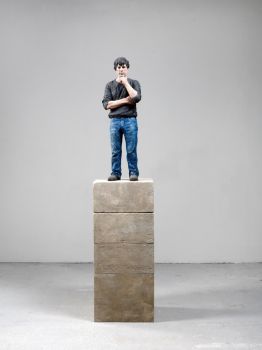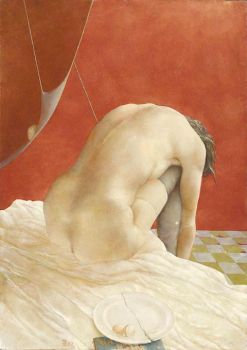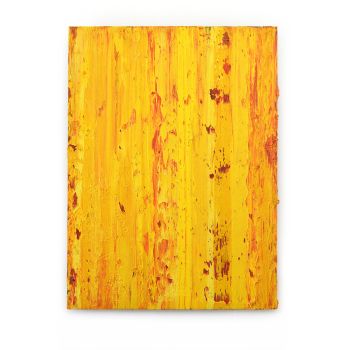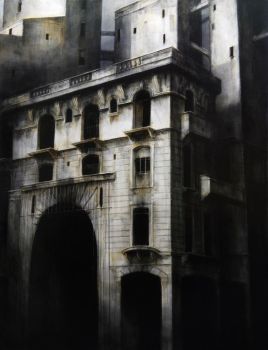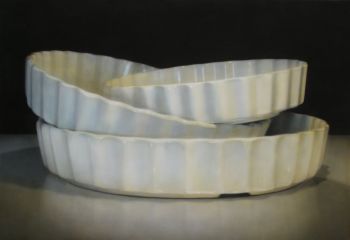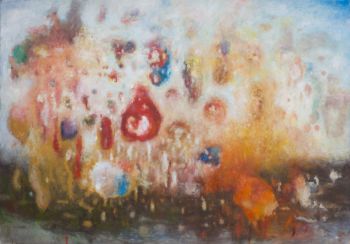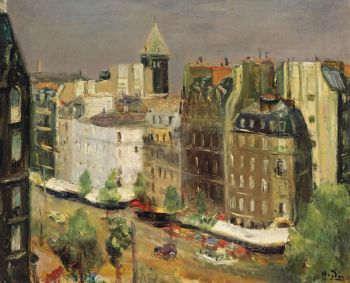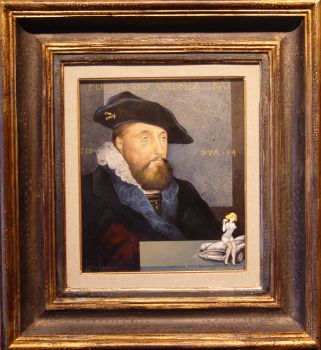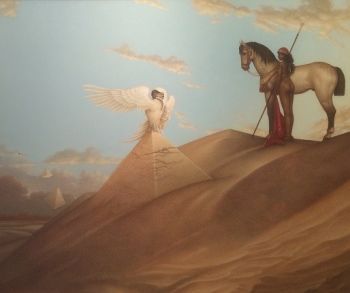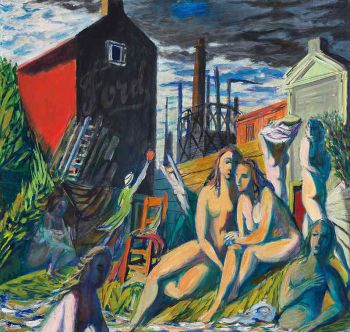A Priestess of Bacchus 1894
William Bouguereau
SegeltuchÖlfarbeFarbe
171 ⨯ 91.40 cm
Derzeit nicht über Gallerease verfügbar
- Über KunstwerkWILLIAM BOUGUEREAU (1825¬-1905)
A Priestess of Bacchus
Signed and dated W-BOUGUEREAU 1894 (lower left) | Oil on canvas | 171 by 91,4 cm
A seductive dressed lady with an ivy wreath on her head and a pinecone topped staff in her right hand pose for us. She is clearly identified devotee by two unmistakable symbols; the ivy wreath she wears on her head, a reminder of her connection to wine an revelry; and the pinecone topped staff as a priestess of Bacchus. The Priestess of Bacchus herself belongs to the iconographic tradition of Maenads, or Bacchantes. In Greek mythology, maenads were the female followers of Bacchus, the god of wine. During Bacchanalia, Roman festivals of Bacchus, this Greco-Roman god of wine, freedom, drunkeness and ecstasy was honored. Maenads were portrayed as inspired by Dionysus into a state of ecstatic frenzy through a combination of dancing and a lot of wine. During these rites, the maenads would carry a thyrsus, a long stick wrapped in ivy or vine leaves and tipped with a pine cone. They would weave ivy-wreaths around their heads.
The Priestess of Bacchus, ‘a bacchante’, was a favorite theme for nineteenth century artists as Bouguereau because of the ecstatic youthfulness of the bacchantes.
The model for this painting was an Italian girl who posed frequently for Bouguereau in 1894 and 1895. This picture was painted in 1894. It is a beautiful almost life-size example of Bougureau’s skills as an artist. Where earlier examples of the classical themes intended to convey a particular narrative, this picture shows only a single model. The painting belongs to a series referred by the artist as ‘Fantasy paintings’. In this series, Bouguereau isolates his subject within a vast landscape. Only the pine cone and the ivy wreath give reference to the meaning of the figure.
This picture of an Italian beauty as a Bacchante draws a line between the early portraits of Italian peasant woman and the later classical theme in the oeuvre of Bouguereau. His preference for Roman antiquity can be seen in the figure’s delicate features and remarkable physiognomy. Her strong, contrapposto stance evokes the autonomous beauty of Classical statuary.
BIOGRAPHY WILLIAM BOUGUEREAU
William-Adolphe Bouguereau was born in La Rochelle, France, on November 30, 1825 into a family of wine and olive oil merchants. He showed artistic talent early on. He went to the École des Beaux-Arts in Bordeaux. Bouguereau went to Paris and became a student at the École des Beaux-Arts. He won the Prix de Rome in 1850. His stay in Italy infl uenced the rest of his career. He exhibited at the annual Paris salon during his entire career. In 1856, he married Marie-Nelly Monchablon and subsequently had five children. Bouguereau gained the honors of the Academy; Life Member in 1876, and Commander of the Legion of Honor and Grand Medal of Honor in 1885. He began to teach drawing at the Académie Julian in 1875, an institution independent of the École des Beaux-Arts. In 1877, both his wife and infant son died. Bouguereau was married a second time in 1896, to his pupil Elizabeth Jane Gardner. On August 19, 1905, Bouguereau died in La Rochelle at the age of 79 of heart disease. During his lifetime Bouguereau was considered to be one of the greatest painters in the world by the Academic art community. On the other hand he was disputed by the avantgardist painters like the Impressionists. Bouguereau’s works were eagerly collected in the late 19th century by wealthy art patrons who considered him the most important French artist of the 19th century. After 1920, Bouguereau fell into disrepute, due in part to changing tastes and partly to his opposition to the Impressionists who were now en vogue. Bouguereau’s popularity has seen a great revival. Bouguereau’s works are in many public collections such as Musee d’Orsay in Paris and the Metropolitan Museum in New York. Paintings by Bouguereau are now in great demand at record breaking prices.
Literature:
L. Munsey’s Magazine November 1897, ‘paintings’, with picture, p.280 Marius Vachon, W. Bouguereau, Paris, 1900, p. 158 Mark Steven Walker, ‘William-Adolphe Bouguereau, A Summary Catalogue of the Paintings’, William-Adolphe Bouguereau, L’Art Pompier, exh. cat., Borghi & Co., New York, 1991, p. 74 Damien Bartoli with Frederick C. Ross, William Bouguereau, Catalogue Raisonné of his Painted Work, New York, 2010, p.294, no. 1894/14 (with incorrect provenance), illustrated
Provenance:
Private collection, New York; Sale Sotheby Parke Bernet, New York, May 31, 1945, lot 80, illustrated; Private collection; Sale Sotheby Parke Bernet, February 12, 1970, illustrated; Private collection; By descent - Über KünstlerWilliam-Adolphe Bouguereau was born in La Rochelle, France, on November 30, 1825 into a family of wine and olive oil merchants.
He showed artistic talent early on. He went to the École des Beaux-Arts in Bordeaux. Bouguereau went to Paris and became a student at the École des Beaux-Arts. He won the Prix de Rome in 1850. His stay in Italy infl uenced the rest of his career. He exhibited at the annual Paris salon during his entire career.
In 1856, he married Marie-Nelly Monchablon and subsequently had five children. Bouguereau gained the honors of the Academy; Life Member in 1876, and Commander of the Legion of Honor and Grand Medal of Honor in 1885. He began to teach drawing at the Académie Julian in 1875, an institution independent of the École des Beaux-Arts. In 1877, both his wife and infant son died. Bouguereau was married a second time in 1896, to his pupil Elizabeth Jane Gardner. On August 19, 1905, Bouguereau died in La Rochelle at the age of 79 of heart disease. During his lifetime Bouguereau was considered to be one of the greatest painters in the world by the Academic art community. On the other hand he was disputed by the avantgardist painters like the Impressionists. Bouguereau’s works were eagerly collected in the late 19th century by wealthy art patrons who considered him the most important French artist of the 19th century.
After 1920, Bouguereau fell into disrepute, due in part to changing tastes and partly to his opposition to the Impressionists who were now en vogue. Bouguereau’s popularity has seen a great revival. Bouguereau’s works are in many public collections such as Musee d’Orsay in Paris and the Metropolitan Museum in New York. Paintings by Bouguereau are now in great demand at record breaking prices.
Artwork details
Kategorie
Thema
Stil
Material & Technik
Farbe
Related artworks
Carel Nicolaas Storm van 's Gravesande
My studio in Bruxelles1841 - 1924
Preis auf AnfrageKunsthandel Pygmalion
Bernardus Johannes Blommers
Het bereiden van de maaltijd1870 - 1914
Preis auf AnfrageStudio 2000 Art Gallery
1 - 4 / 24- 1 - 4 / 24
- 1 - 4 / 24

